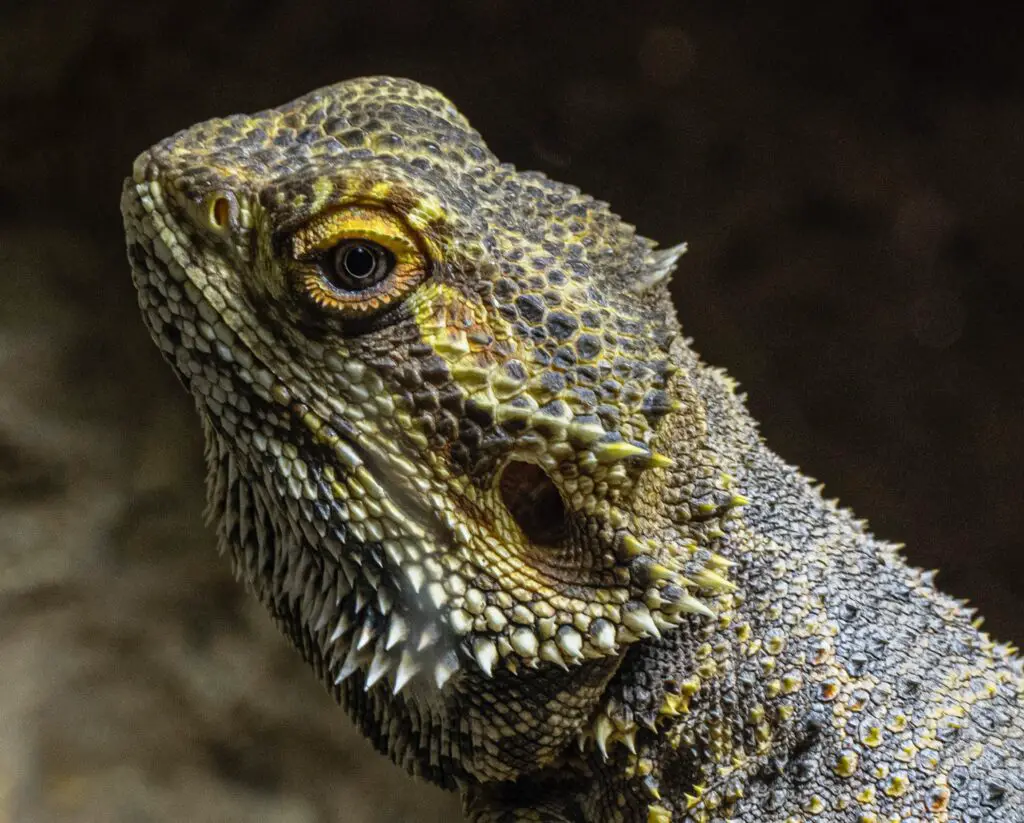Scale Rot Bearded Dragons
Scale rot bearded dragons: Bearded dragons are often regarded as captivating reptile pets that have gained immense popularity among reptile enthusiasts and pet lovers alike. With their unique appearance, docile nature, and relatively easy care requirements, these fascinating creatures have become a common choice for those seeking an exotic companion.
Native to the arid regions of Australia, bearded dragons belong to the Pogona genus and are known for their impressive ability to puff out their throat scales, resembling a beard when threatened or displaying dominance. These diurnal lizards thrive in captivity when provided with proper housing, nutrition, and environmental conditions.
Brief Overview of Bearded Dragons as Popular Reptile Pets
The appeal of bearded dragons as pets stems from their appealing characteristics and manageable size. These reptiles typically grow to reach an adult length of 18-24 inches (45-60 cm), making them suitable for indoor enclosures without requiring excessive space.
Their gentle demeanor and willingness to tolerate handling make them popular choices for both novice and experienced reptile keepers. Bearded dragons also exhibit fascinating behaviors that engage owners.
They are known for their basking routines under heat lamps or UVB lighting, which is crucial for thermoregulation and vitamin D synthesis. Additionally, they have distinctive personalities that can develop over time through regular interaction with their caregivers.
Introduction to Scale Rot as a Common Health Issue in Bearded Dragons
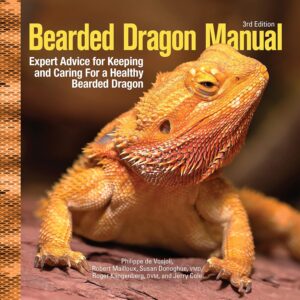 Despite being hardy creatures when given appropriate care, bearded dragons are susceptible to various health concerns. One prevalent condition among these exotic pets is scale rot, which can significantly impact their well-being if not promptly addressed. Scale rot refers to a bacterial or fungal infection that affects the scales of bearded dragons’ skin.
Despite being hardy creatures when given appropriate care, bearded dragons are susceptible to various health concerns. One prevalent condition among these exotic pets is scale rot, which can significantly impact their well-being if not promptly addressed. Scale rot refers to a bacterial or fungal infection that affects the scales of bearded dragons’ skin.
It commonly appears as discolored, swollen, or necrotic patches on the ventral or dorsal surface of their bodies. These infections can be caused by poor hygiene, unsanitary living conditions, inadequate ventilation, or improper temperature and humidity levels within their enclosure.
In the following sections of this article, we will delve deeper into understanding scale rot in bearded dragons. We will explore its causes and risk factors, discuss the symptoms and diagnosis methods employed by veterinarians, examine treatment options available to affected individuals, and provide essential guidelines for prevention to ensure the well-being of these remarkable reptiles.
Understanding Scale Rot
Definition and Causes of Scale Rot in Bearded Dragons
Scale rot, also known as necrotic dermatitis, is a common health issue that affects bearded dragons. It is a bacterial or fungal infection that primarily affects the skin and underlying tissues.
This condition manifests as localized areas of discoloration, swelling, ulceration, and sometimes even tissue necrosis. Scale rot typically occurs in the areas where there is prolonged exposure to moisture or poor hygiene practices.
The causes of scale rot in bearded dragons are multifactorial. One primary cause is improper habitat conditions.
If the enclosure lacks proper ventilation or has excessive humidity levels, it creates an ideal environment for bacteria and fungi to thrive on the reptile’s skin. Additionally, maintaining an unclean enclosure with dirty substrate can introduce pathogens that lead to infection.
Importance of Maintaining Proper Hygiene and Habitat Conditions to Prevent Scale Rot
Maintaining proper hygiene and habitat conditions is crucial for preventing scale rot in bearded dragons. Regular cleaning and disinfection of the enclosure are necessary to minimize the presence of harmful microorganisms that contribute to infections like scale rot.
Firstly, maintaining appropriate humidity levels within the enclosure is essential. Bearded dragons require a relatively low humidity environment (around 30-40%).
High humidity can promote bacterial growth on their skin, increasing the likelihood of developing scale rot. Adequate ventilation within the enclosure helps maintain optimal humidity levels.
Secondly, ensuring a clean substrate is key to preventing scale rot. Substrates such as paper towels or reptile carpet are recommended over loose substrates like sand or wood shavings because they are easier to keep clean and don’t harbor bacteria as easily.
Regularly removing feces and uneaten food particles from the enclosure minimizes bacterial load and reduces the risk of infection. Moreover, providing adequate basking spots and a temperature gradient within the enclosure helps maintain the overall health of bearded dragons.
Proper temperature regulation supports their immune system, making them less susceptible to infections like scale rot. Understanding the definition and causes of scale rot in bearded dragons is essential to effectively prevent this common health issue.
Maintaining proper hygiene practices by ensuring adequate ventilation, controlling humidity levels, and keeping a clean enclosure with suitable substrate are crucial for mitigating the risk of scale rot. By adopting these preventive measures, reptile owners can help promote the well-being and longevity of their beloved bearded dragons.
Symptoms and Diagnosis
Detailed Description of the Physical Symptoms Exhibited by Bearded Dragons with Scale Rot
Scale rot, also known as necrotic dermatitis, can have several noticeable physical symptoms in bearded dragons. One of the primary signs is discoloration or darkening of the affected areas. The scales may appear discolored, ranging from a slightly darker shade to a deep blackened hue.
As the condition progresses, these areas may become swollen or develop a crusty texture. Furthermore, scale rot often leads to the development of open sores or ulcers on the reptile’s skin.
These wounds can vary in size and severity but are typically characterized by redness, irritation, and oozing discharge. In more severe cases, bearded dragons may experience tissue necrosis, where affected areas become black and necrotic due to poor blood circulation.
Moreover, bearded dragons with scale rot may exhibit behavioral changes as they try to relieve discomfort or pain caused by the condition. They might display signs of itchiness or discomfort by scratching against objects in their enclosure or rubbing their bodies against rough surfaces.
Discussion on How Veterinarians Diagnose Scale Rot through Visual Examination and Laboratory Tests
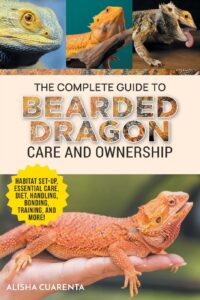 Veterinarians employ various diagnostic techniques to confirm whether a bearded dragon has scale rot. Visual examination is one crucial aspect of diagnosis where veterinarians carefully inspect the affected area for any notable signs such as discoloration or open wounds.
Veterinarians employ various diagnostic techniques to confirm whether a bearded dragon has scale rot. Visual examination is one crucial aspect of diagnosis where veterinarians carefully inspect the affected area for any notable signs such as discoloration or open wounds.
They also take note of whether there is any associated swelling or discharge. In addition to visual inspection, veterinarians may collect samples from the infected areas for further analysis in laboratory tests.
These samples can include swabs taken from the surface of infected skin lesions or even small biopsies obtained from deeper tissues if necessary. Laboratory tests such as bacterial culture and sensitivity analysis are commonly performed on these samples to identify the specific bacteria or fungi responsible for the infection.
This helps veterinarians determine the most appropriate treatment plan. The results of these tests also help in ruling out other potential causes of similar symptoms.
It is crucial to consult a reptile veterinarian promptly if you suspect your bearded dragon has scale rot. They possess the expertise to accurately diagnose the condition based on clinical signs, visual examination, and laboratory tests, ultimately providing the most suitable treatment options for your beloved pet.
Risk Factors for Scale Rot
Environmental Factors
One of the primary risk factors contributing to the development of scale rot in bearded dragons is the presence of high humidity and unsanitary conditions within their habitat. Bearded dragons require a specific range of humidity levels, typically between 30% to 40%, to maintain healthy skin and prevent infections.
However, if the humidity level rises above this range for prolonged periods, it creates a favorable environment for bacteria and fungi to flourish on the scales. Additionally, dirty or damp substrate can further exacerbate the problem as it provides a breeding ground for harmful microorganisms and increases moisture retention.
It is imperative for bearded dragon owners to regularly monitor and control humidity levels within their reptile’s enclosure. Proper ventilation systems or adequate air circulation can help mitigate excessive moisture buildup.
Regularly cleaning and replacing substrate material is also essential in maintaining a clean and hygienic environment that discourages bacterial growth. By addressing these environmental factors, owners can significantly reduce the risk of their bearded dragons developing scale rot.
Poor Nutrition and Weakened Immune System
Another crucial risk factor contributing to scale rot in bearded dragons is poor nutrition leading to a weakened immune system. A well-balanced diet is essential for maintaining optimal health in these reptiles. Inadequate nutrition can result from an improper diet lacking essential nutrients like vitamins (especially vitamin A), minerals (such as calcium), or proteins necessary for proper immune function.
When a bearded dragon’s immune system becomes compromised due to poor nutrition, its ability to combat infections like scale rot diminishes significantly. Malnourished individuals have weakened defenses against pathogens, making them more susceptible to various illnesses, including scale rot.
It is crucial that owners provide their reptile companions with a proper diet consisting of nutrient-rich vegetables, fruits, insects (such as crickets or mealworms), and even commercially available reptile supplements. By ensuring a balanced and nutritious diet, owners can help strengthen their bearded dragons’ immune systems, reducing the risk of scale rot and other health issues.
Several risk factors contribute to the development of scale rot in bearded dragons. Environmental factors such as high humidity or unsanitary conditions within their habitat play a significant role in creating a favorable environment for bacterial and fungal growth.
Additionally, poor nutrition leading to a weakened immune system increases their susceptibility to infections like scale rot. Therefore, maintaining optimal humidity levels, cleanliness within the enclosure, and providing a well-balanced diet are crucial preventive measures to minimize the risk of scale rot in bearded dragons.
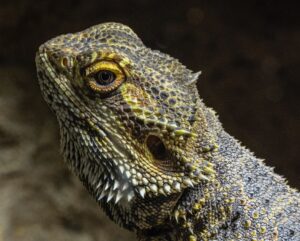
Treatment Options
When it comes to treating scale rot in bearded dragons, there are several effective methods that can be employed to alleviate the condition and promote healing. One commonly utilized approach is the use of topical ointments specifically designed to combat bacterial or fungal infections.
These ointments often contain active ingredients such as antiseptics or antibiotics that can help eradicate the pathogens responsible for scale rot. Applying these ointments directly to the affected areas can aid in soothing discomfort and facilitating recovery.
In more severe cases of scale rot, oral medications may be prescribed by a veterinarian. These medications are typically antibiotics or antifungal drugs that are administered orally and work internally to combat the underlying infection.
It is crucial to adhere strictly to the prescribed dosage and duration of treatment in order to maximize effectiveness while minimizing any potential side effects. Additionally, it is important for pet owners to closely monitor their bearded dragon’s response to these medications and report any concerns or adverse reactions promptly.
Seeking veterinary advice is crucial when dealing with scale rot in bearded dragons. A veterinarian specializing in reptiles will possess both the knowledge and experience necessary for accurate diagnosis and devising a tailored treatment plan based on an individual dragon’s unique condition. They will conduct a thorough examination, taking into account various factors such as the severity of infection, overall health status, and potential underlying causes.
A professional veterinarian will select appropriate treatment options based on these assessments, ensuring that they address not only the symptoms but also target the root cause of scale rot. They will guide pet owners in administering medications correctly, provide detailed wound cleaning techniques, and offer advice on maintaining proper hygiene and habitat conditions.
Regular follow-up visits will also be recommended to monitor the progress of the treatment and make adjustments if needed. Ultimately, seeking professional veterinary advice is vital for the well-being and recovery of bearded dragons suffering from scale rot.
Prevention Strategies
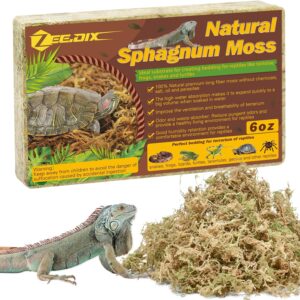 Maintaining a clean and suitable habitat is crucial in preventing the occurrence of scale rot in bearded dragons. Firstly, ensure that the enclosure is spacious enough, allowing the reptile to move freely without overcrowding.
Maintaining a clean and suitable habitat is crucial in preventing the occurrence of scale rot in bearded dragons. Firstly, ensure that the enclosure is spacious enough, allowing the reptile to move freely without overcrowding.
Regular cleaning of the habitat is essential to prevent the buildup of bacteria and fungi. Remove any uneaten food promptly, as it can attract pests and lead to unsanitary conditions.
Maintaining proper humidity levels is vital for preventing scale rot. Bearded dragons require a relatively low humidity environment, ideally between 30% and 40%.
Excessive humidity can create a damp environment that promotes the growth of bacteria and fungi. Regular monitoring with an accurate hygrometer will help you maintain optimal levels.
Tips for Proper Nutrition and Hydration
Proper nutrition plays a significant role in boosting a bearded dragon’s immune system and overall health, reducing their susceptibility to scale rot. Offer a well-balanced diet consisting primarily of gut-loaded insects (such as crickets or dubia roaches), leafy greens (such as collard greens or mustard greens), and occasional fruits. Ensure that your bearded dragon has access to clean, fresh water at all times.
Hydration is important for their overall well-being, aiding digestion and preventing dehydration-related issues that might weaken their immune system. Consider providing water through droplets on plants or misting rather than using water dishes since they may soil them.
Lesser-known Facts about Scale Rot in Bearded Dragons
A: Rarely known details about specific bacterial or fungal species commonly associated with scale rot Scale rot can occur due to both bacterial and fungal infections. Common culprits include Pseudomonas aeruginosa, Aeromonas hydrophila, Staphylococcus spp., as well as various species of fungi such as Fusarium spp., Aspergillus spp., and Candida spp.
These pathogens can thrive in unhygienic conditions or when a bearded dragon’s immune system is compromised. B: Uncommon cases or unique scenarios related to treating or preventing scale rot in bearded dragons
In certain cases, bearded dragons with scale rot may require more intensive treatment approaches, including the use of systemic antibiotics or antifungal medications. Some severe cases might necessitate surgical debridement, where necrotic tissues are carefully removed by a veterinarian to promote healing and prevent further spread of infection.
To sum up scale rot bearded dragons
Maintaining optimal hygiene and providing proper nutrition can significantly reduce the risk of scale rot in bearded dragons. Regular cleaning of their habitat, ensuring appropriate humidity levels, and offering a balanced diet are crucial preventative measures.
Furthermore, understanding the lesser-known facts about specific bacterial and fungal species associated with scale rot helps in early detection and targeted treatment. By following these prevention strategies and providing optimal care for your scaly companion, you can ensure their well-being while enjoying a healthy and vibrant pet reptile in your home.
Further Reading:
- Carolina Custom Cages Terrarium Review
- 8 Best Basking Rocks for Beardie: What Is the Best Choice?
- 10 Best Thermometers for Beardie: How to Choose the Best One?
- 5 Best Beardie Lighting Setups for Beardie Lovers
- 9 Best Heat Lamps for Beardie: Natural Habitat Provided

